[FIX] isPostback_RC_Pendingupdates Error Windows Update
Your system may show isPostback_RC_Pendingupdates error if your system drivers especially, chipset drivers (like Intel ME) are outdated. Moreover, a corrupt Windows Update Agent or Windows installation may also cause the error under discussion.
The issue arises when the user tries to update the system which fails and the user launches the Windows Troubleshooter.
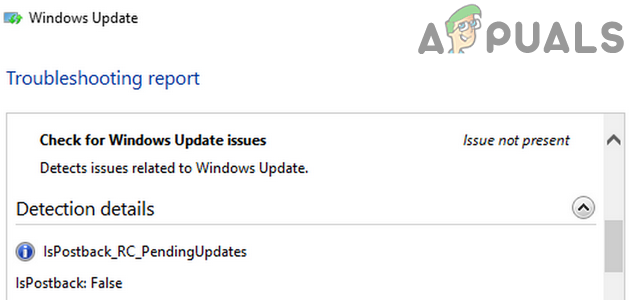
Before moving on with the solutions, unplug any external devices from the system like USB, external Hard Disk, etc.
Solution 1: Disable Metered Connection for Your Network
The users who have a limited data plan, tend to change their network type to the metered connection which restricts the operation of different applications and services (including Windows update). In this scenario, disabling the metered connection option for your network may solve the problem.
- Launch the Windows Search by pressing Windows + S keys and then type Settings. Now, in the results shown by the search, click on Settings.
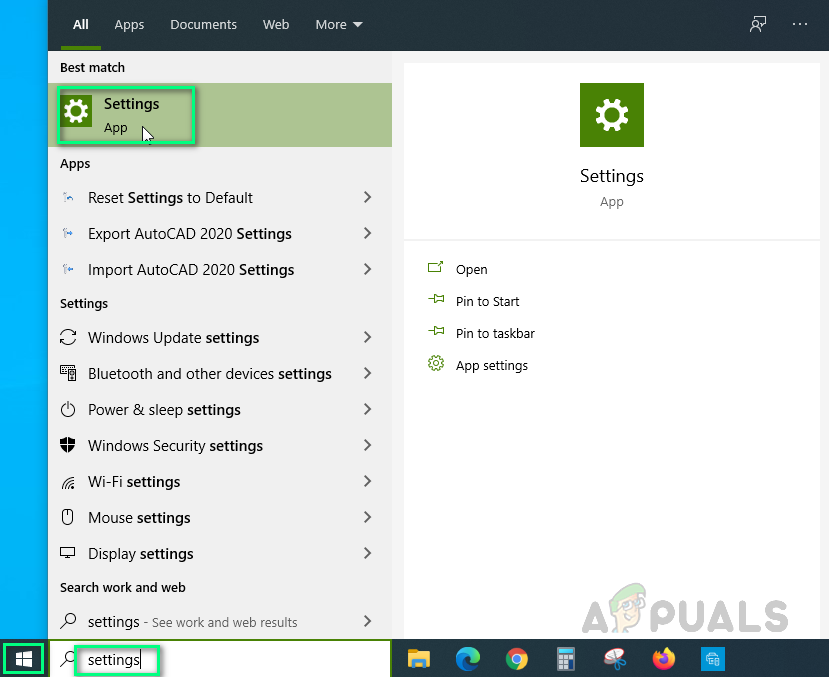
Opening Windows Settings - Open Network & Internet and then click on the Properties (under your network connection).
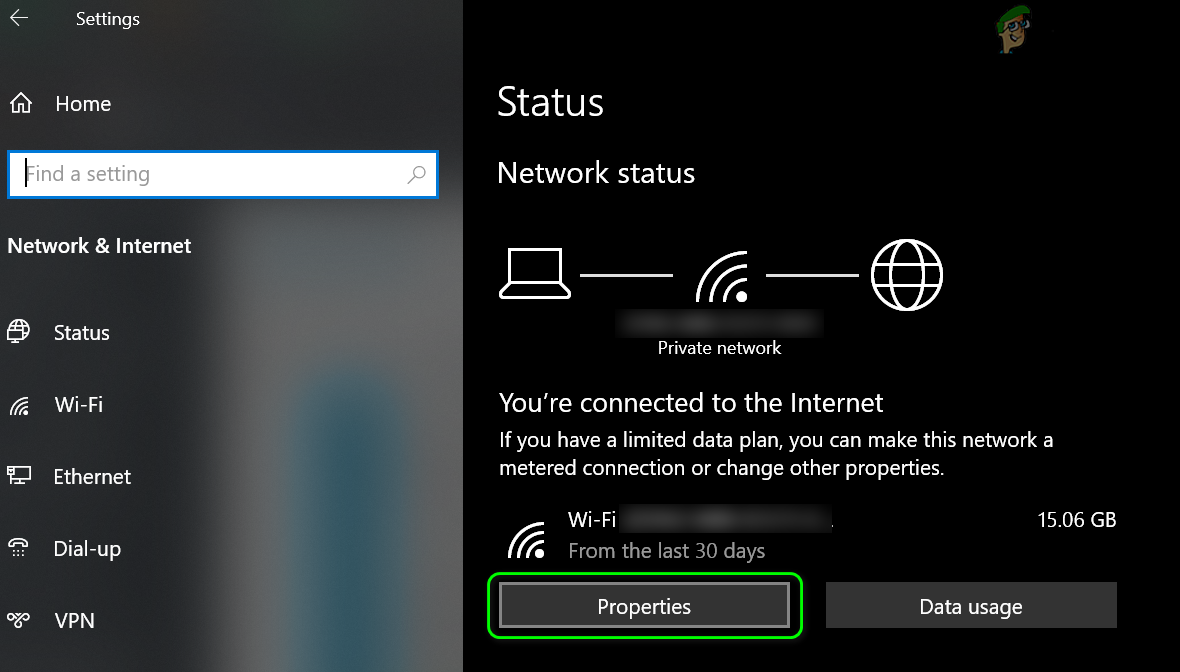
Open Properties of Your Network Connection - Toggle the switch of Set as Metered Connection (in the Metered Connection section) to off position.
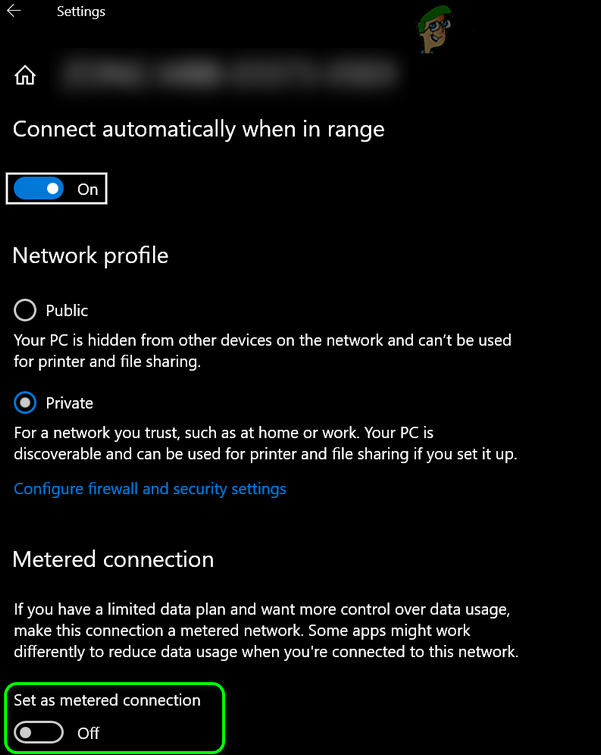
Disable Metered Connection - Now restart your system and upon restart, check if the pending updates issue is resolved.
Solution 2: Clean Boot Your System or Boot Your System into Safe Mode with Networking
Your system may show the pending updates error if any of the third-party applications/drivers are interfering in the operation of updates. In this case, either clean booting your system or booting your system into safe mode with network and then updating the system may solve the problem.
- Clean boot your system and then check if you can update your system normally.
- If not, boot your system into safe mode with networking (for some users, in the Safe mode with networking, Wi-Fi was disabled but ethernet connection worked fine) and check if you can update your system without any issue.

Boot computer in Safe Mode with networking - If not, then try all the solutions mentioned in this article with safe mode with networking (if possible).
Solution 3: Set Startup Type of Background Intelligence Transfer Service and Windows Update Service to Automatic
You may encounter the error under discussion if the Background Intelligence Transfer Service and Windows Update service are not set to Automatic as it may hinder the operation of Windows updates. In this context, setting the startup type of the said services to Automatic may solve the problem.
- Press Windows + Q keys to launch Windows Search and then search for Services. Now, in the list of results shown, right-click on Services and then select Run as Administrator.
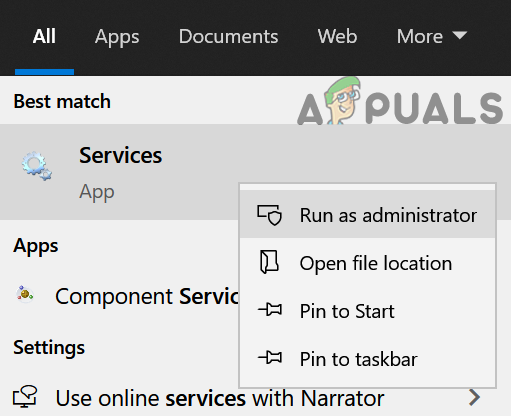
Open Services as Administrator - Now right-click on Background Intelligence Transfer Service and then select Properties.
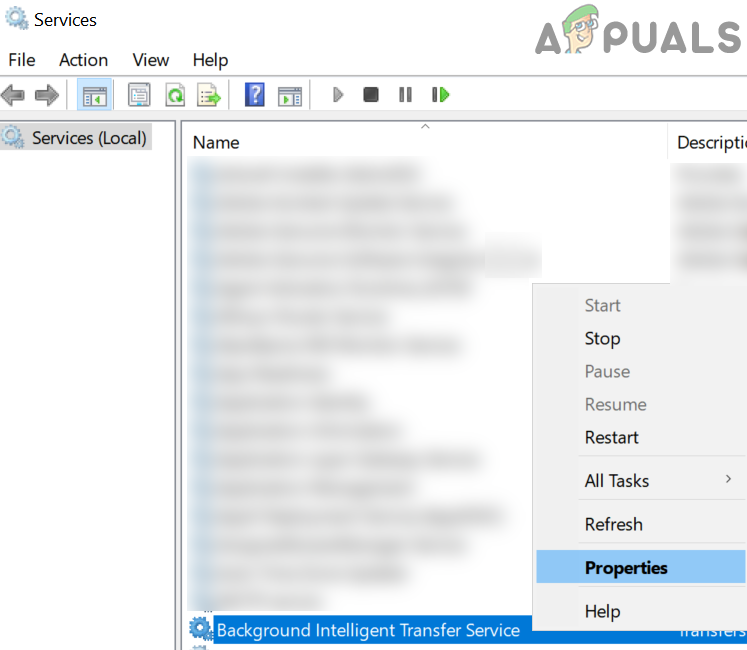
Open Properties of Background Intelligence Transfer Service - Then expand the dropdown of Startup type and select Automatic.
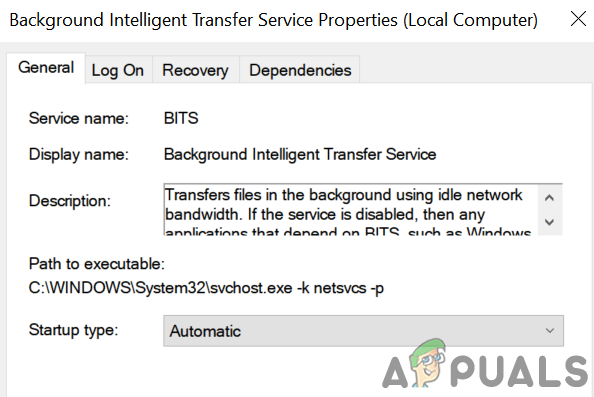
Change Startup Type of BITS to Automatic - Now, click on Apply/OK buttons. If the Background Intelligence Transfer Service is already set to Automatic, stop it, and then start it.
- Then repeat the same process to change the Startup type of Windows Update Service to Automatic. If the Windows Update Service is already set to Automatic, stop it, and then start it.
- Now, reboot your PC and upon reboot, check if the pending update issue is resolved.
Solution 4: Update the System Drivers to the Latest Build
Your system may show the current update error if your system drivers are not updated, especially chipset drivers (like Intel ME). In this case, updating the system drivers may solve the problem.
- Update the system drivers to the latest build. You may try to update Windows (we know you are encountering the issue with updates but some users were able to install optional updates which eventually let them get rid of the issue) to the latest build. Make sure no update is pending, even the optional ones.
- Now, visit the manufacturer’s website and check if there are any updates available for your system drivers. Also, if some of the drivers are not installed, install the missing ones as well.
- Check if your system is clear of the error at hand.
Solution 5: Restart System Services Related to Windows Update
Your system may show pending updates error if its services are in an error state. In this context, restarting the system related services may solve the problem.
- Press Windows + Q to open the Cortana Search bar and type Command Prompt. Now, in the list of results, right-click the Command Prompt and choose Run as Administrator.
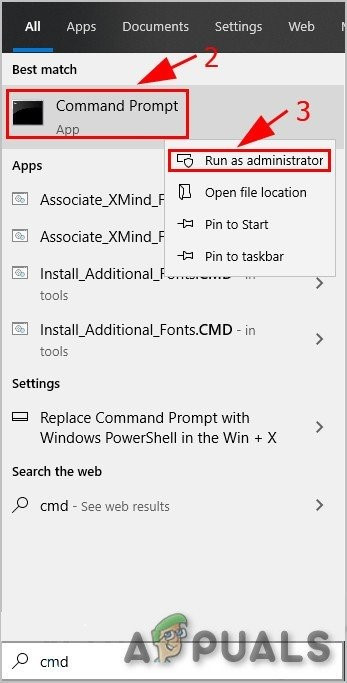
Run Command Prompt as Administrator - Now, execute the following commands one by one:
net stop wuauserv net stop cryptSvc net stop bits net stop msiserver ren C:\Windows\SoftwareDistribution SoftwareDistribution.old ren C:\Windows\System32\catroot2 Catroot2.old net start wuauserv net start cryptSvc net start bits net start msiserver

Stop the Services Related to Windows Update - Now, check if the updates issue is resolved. If not, then restart your system and upon restart, check if your system is clear of the pending updates error.
Solution 6: Reset Windows Update Agent to Defaults
You may encounter the IsPostback_RC_PendingUpdate / IsPostback: False error if the Windows Update agent of your system is corrupt. In this scenario, resetting the Windows Update agent to defaults may solve the problem.
- Launch a Web browser and download the Windows Update Agent Reset tool (ResetWUEng.zip).

Download ResetWUEng.zip - Now, extract the download file and then open the extracted folder.
- Now, right-click on the SetupDiag.exe file and then select Run as Administrator.

Open SetupDiag.exe as Administrator - Then follow the prompts on your screen to reset the Windows Update Agent.
- Now, restart your system and upon restart, check if the Windows Update issue is resolved.
Solution 7: Remove the Newly Installed Windows Update
Microsoft has a history of releasing buggy updates and you can also be a victim of these updates. In this case, reverting to the older version of Windows or uninstalling the latest update may solve the problem.
- Press Windows + Q keys to open Cortana Search and type Settings. Now, choose Settings (in the list of results).
- Now open Update & Security and then, in the left portion of the window, select Recovery.
- Then, click on the button Get Started (in the Go Back to the Previous Version of Windows 10 section).
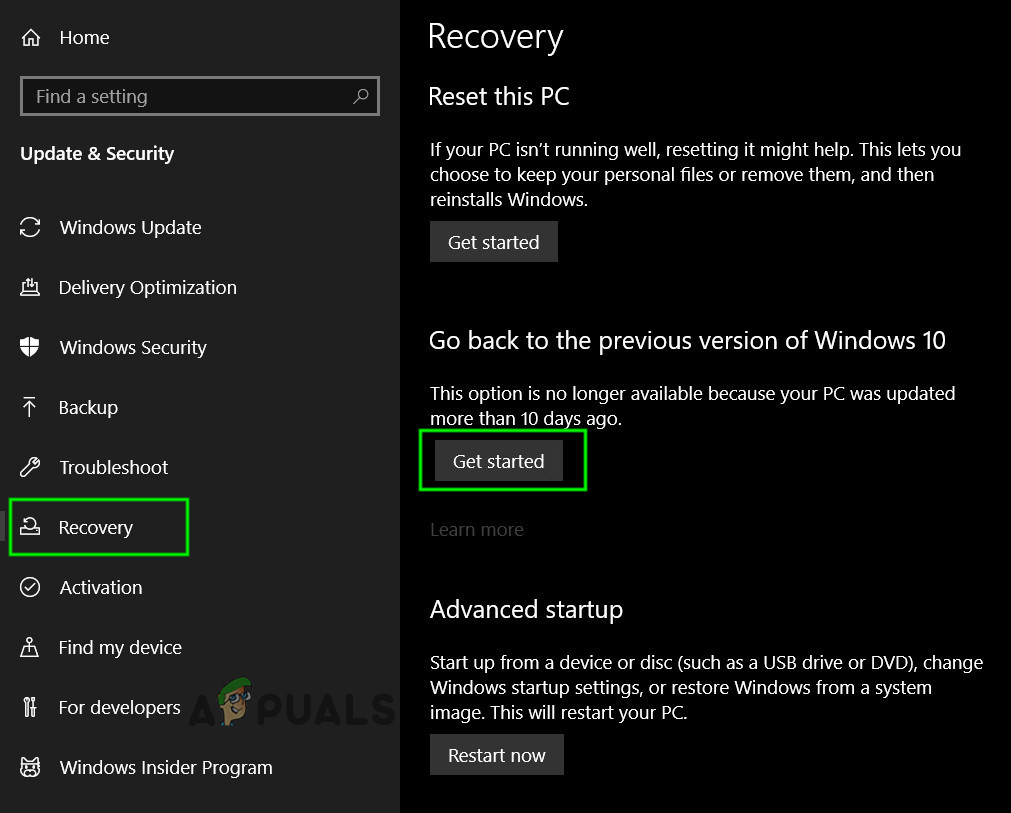
Click on Get Started in Go back to the Previous Version of Windows 10 - Now, follow the prompts on your screen to complete the revert process and then check if the issue is resolved.
If the issue started to occur after a system/optional update, then uninstalling the problematic update may solve the problem.
- Press Windows + Q keys to open Cortana Search and type Settings.
- Now open Update & Security and select View Update History.

Open View Update History - Then, near the top of the window, click on the button of Uninstall Updates.
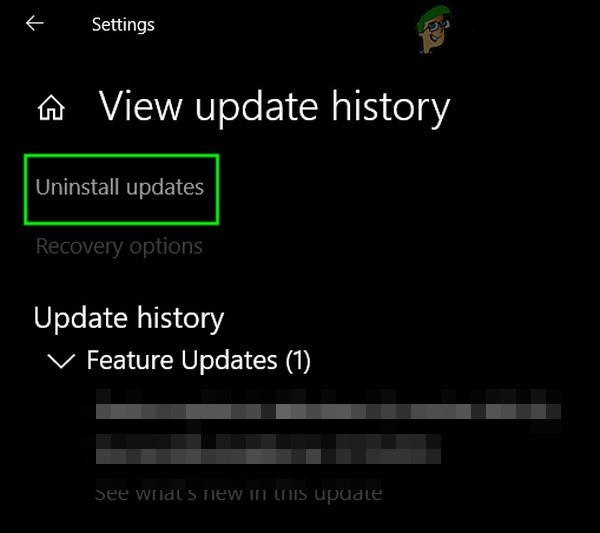
Uninstall Updates in Update History - Now, select the problematic update and click on Uninstall.

Select The Recently Installed Updates and Click Uninstall - Then follow the prompts on your screen to remove the problematic update.
- Now, check if your system is clear of the pending updates error.
Solution 8: Delete Windows Update Download History
Your system may show the pending updates issue if its Windows update download history is corrupt. In this case, deleting the Windows update download history may solve the issue.
- Open the Cortana Search bar by pressing Windows + Q keys and then type Services. Now, in the results pulled by the Search, right-click Services, and then click on Run as Administrator.
- Now, right-click on the Windows Update service, and then, in the menu shown, select Stop.

Stopping Windows Update - Then minimize the Services window and launch the Run command by pressing Windows + R keys.
- Now, execute the following in the Run command box:
\Windows\SoftwareDistribution
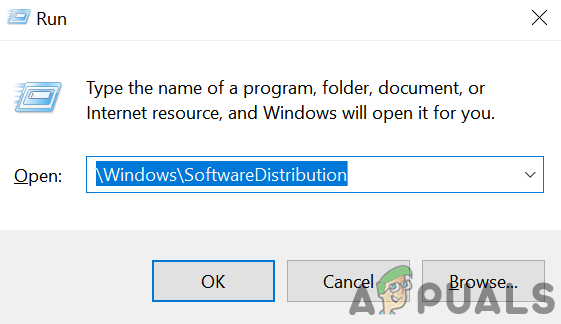
Open Software Distribution Folder - Now delete the DataStore and Download folders.

Delete DataStore and Download Folder in Software Distribution - Then switch to the Services window and start the Windows Update Service.
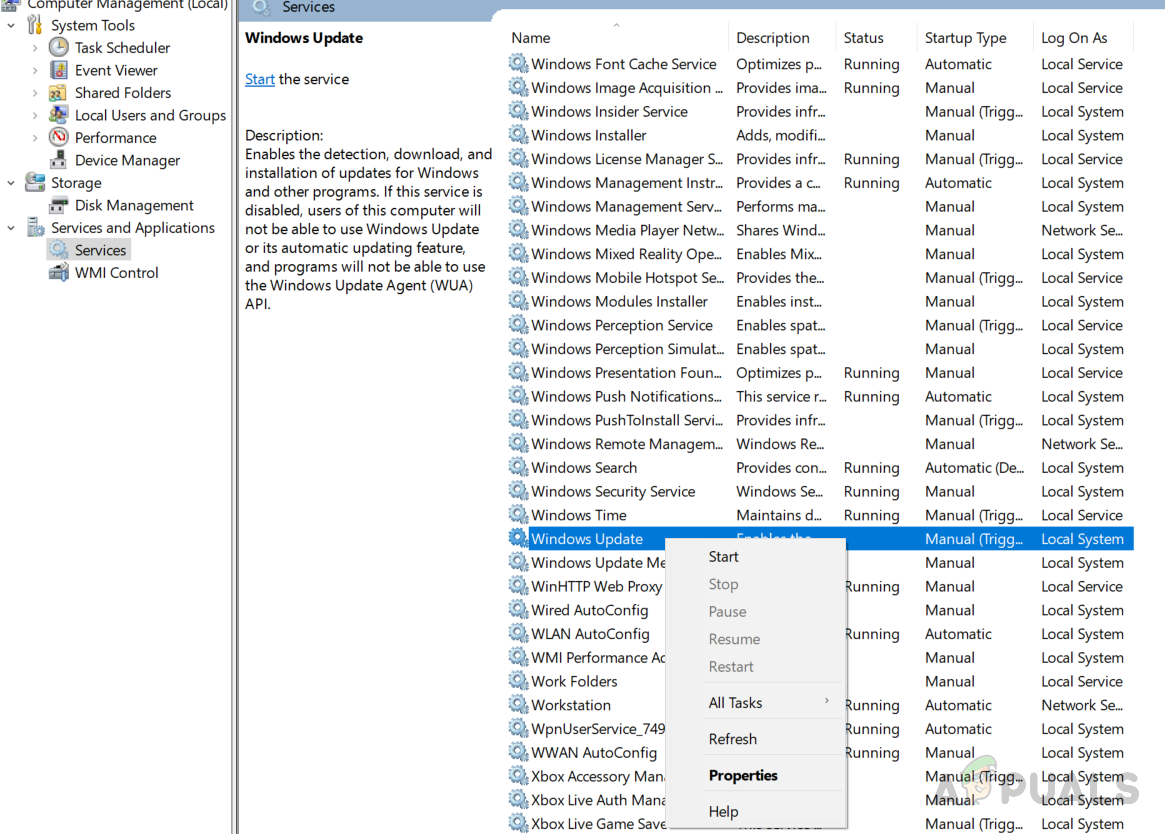
Windows Update Start and Stop - Now restart your system and upon restart, check if the pending updates issue is resolved.
- If not, right-click on the Taskbar of your system, and in the menu shown, choose Task Manager and navigate to the Startup tab.
- Now, enable the processes/services related to the Windows update. If the Windows update processes/services are already enabled, then disable them and restart your system.
- Upon restart, check if your system is clear of the pending updates issue.
Solution 9: Reinstall the Problematic Update Manually
If the pending updates issue is still not resolved, then installing the updates manually may solve the problem.
- Launch a web browser and open the Windows Catalog.

Windows Update Catalog - Now, search for the problematic update and then download it.
- Then install the update and check if the system is clear of the pending updates.
- If not, press the Windows key to launch the Windows menu and then search for Settings (in the Windows Search bar).
- Then choose Update & Security and in the left half of the window, select Troubleshoot.
- Now, in the right half of the window, click on Additional Troubleshooters.
- Then expand Windows Update (in the “Get up and Running” section) and click on the Run the Troubleshooter button.
- Now wait for the completion of the Windows Update troubleshooter and then check if the updates issue is resolved.
Solution 10: Perform an Offline Upgrade of Your System
If none of the solutions solved your issue, then performing an offline upgrade may solve the pending updates issue.
- Launch a web browser and navigate to the Windows 10 download.
- Now, click on the Update Now button (under the latest Windows Update) and then download the update.
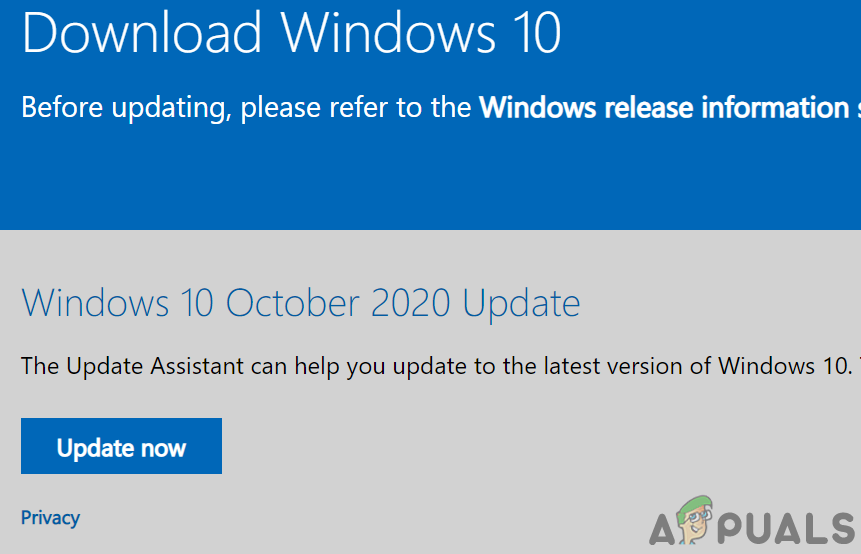
Download Windows Update Assistant - Then, launch the download file with administrative privileges and wait for the completion of the update process.
- Now, reboot your PC and upon reboot, check if the pending update issue is resolved.
- If the update process fails during the process, then try again but when the setup shows installing (not downloading), log off your account and wait for one hour.
- Now on the login screen (do not log in to any account at this step), click on the Power Option and select Update and Restart. If there is no update and restart option, wait some more time (at least 20 minutes) and then check if the “Update and Restart” option shows up, if so, then click on it and wait till your PC restarts (the PC may start on its own during the offline upgrade).
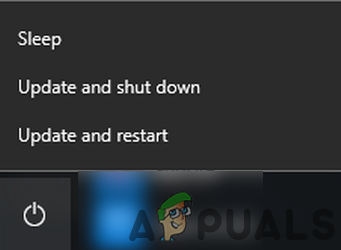
Update and Restart Your System - Upon restart, check if the pending updates issue is resolved.
- If not, repeat the process with safe mode with networking and check if the issue is resolved.
- If not, again open the Windows 10 download page, and under the Create Windows 10 installation media option, click on Download Tool Now.

Download Media Creation Tool Now - Now, launch the downloaded file with administrative privileges and then click Yes (if UAC prompt received).
- Then Accept the license terms and on the next screen, select the option of Create Installation Media (USB Flash Drive, DVD, or ISO File) for Another PC.
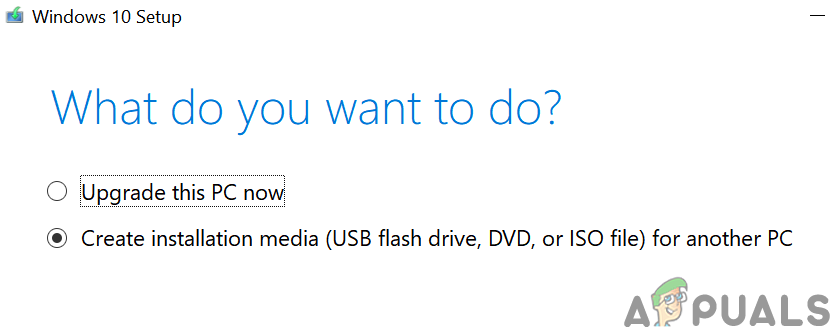
Select Create Installation Media - Now, select Language, Edition, & Architecture, and on the next screen, select the option of ISO file.

Select ISO File Type - Then select the location to save the ISO file and then click on Next.
- Now, wait for the completion of the download and then extract the downloaded ISO file.
- Then disconnect your system from the internet and then temporarily disable your antivirus (be cautious as disabling antivirus may expose your system to threats like viruses etc.).
- Now, open the extracted ISO folder and right-click on Setup.exe.
- Then select Run as Administrator and follow the prompts on your screen to perform an offline upgrade.
- Upon completion of the upgrade, hopefully, the pending updates issue is resolved.
If none of the solutions rectified the issue, you may have to either reset your PC (or use your system’s recovery partition, if supported) or perform a clean installation of Windows.





